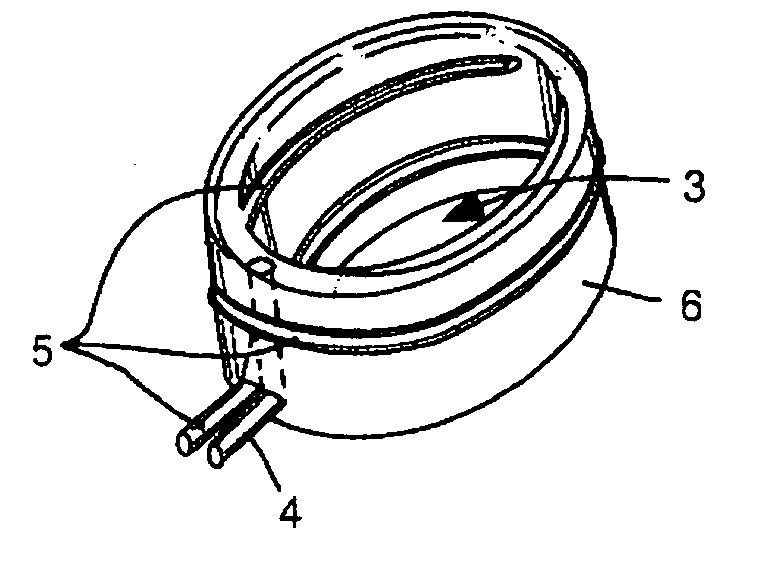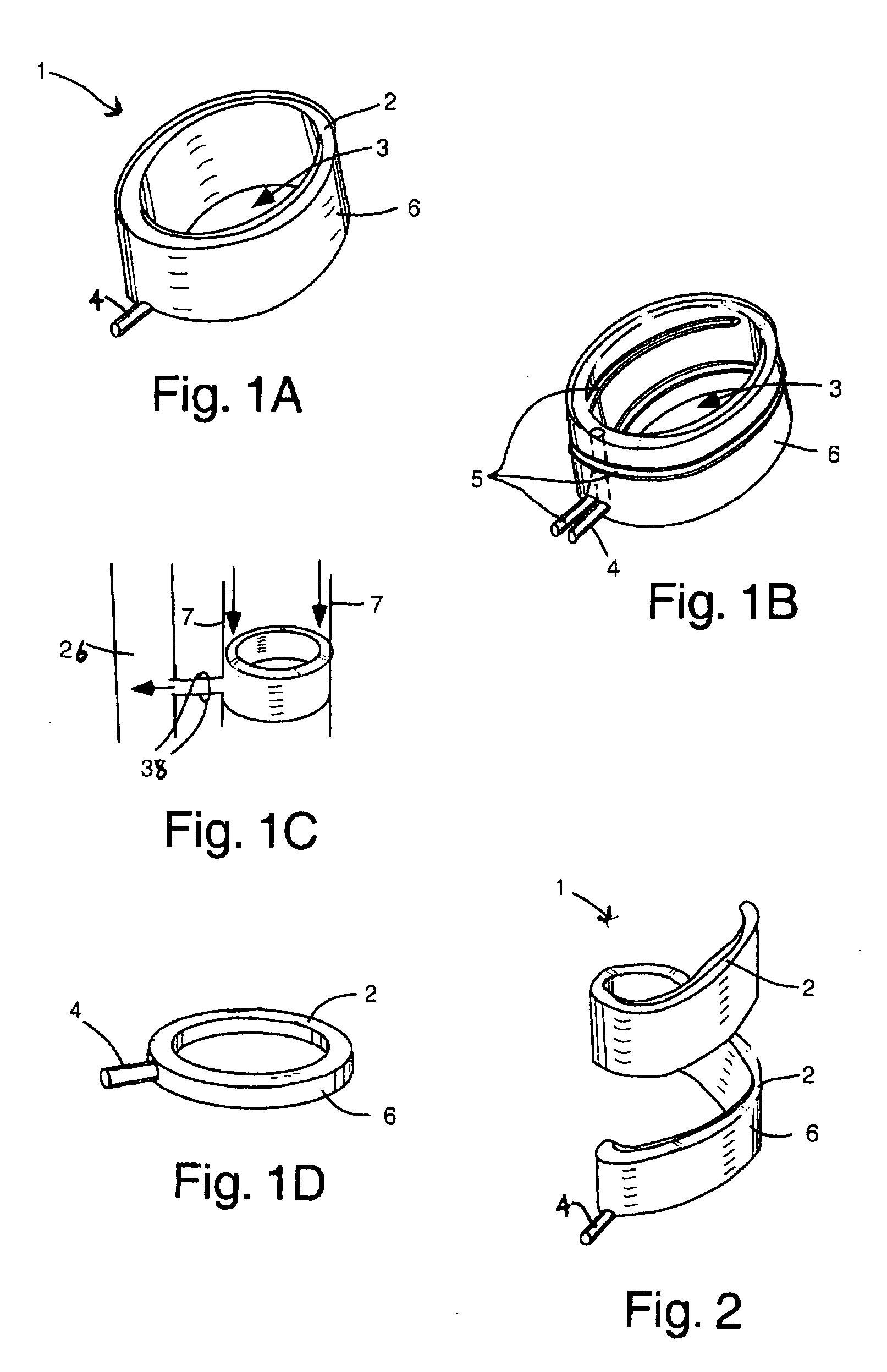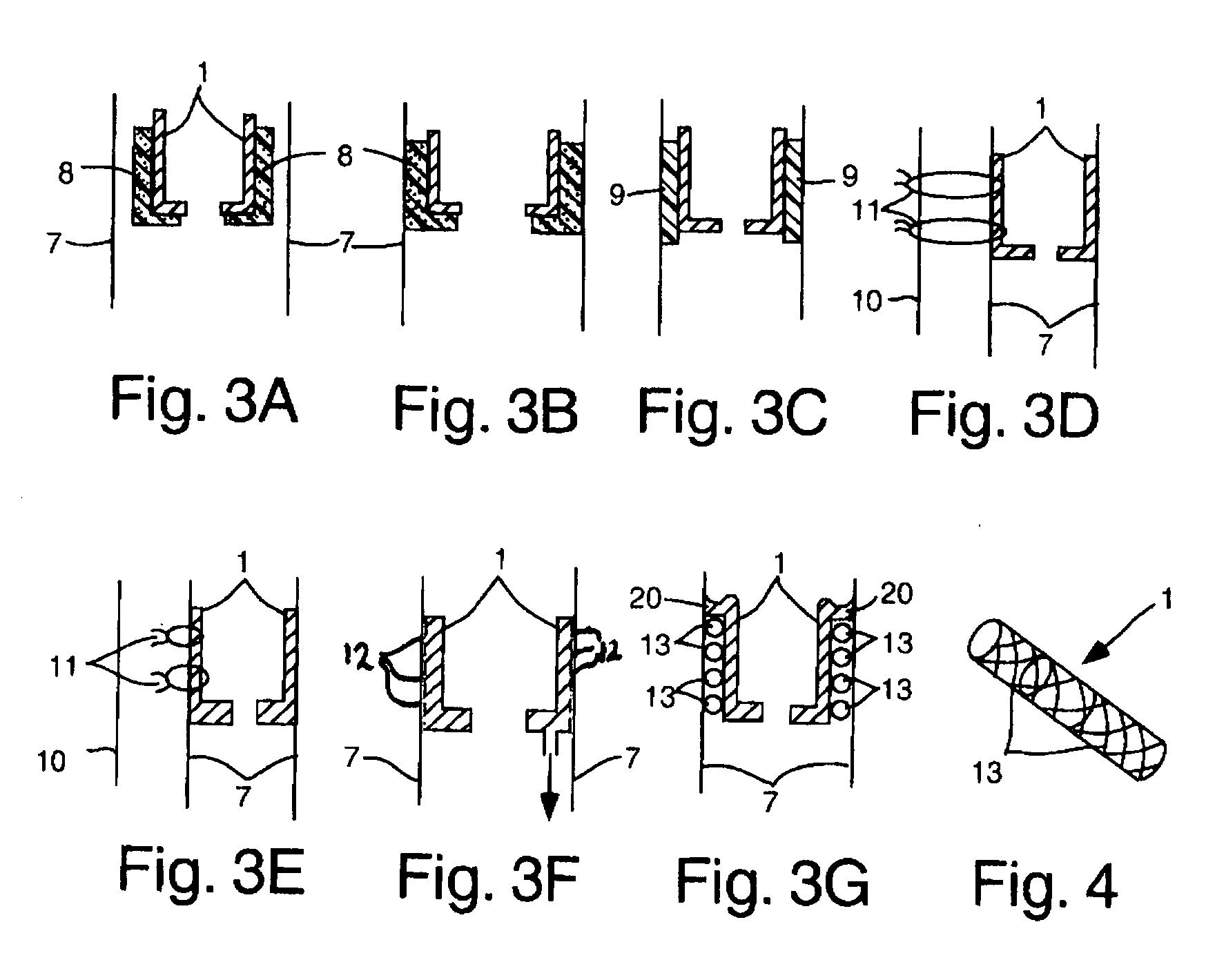Airway implant devices and methods of use
a technology of implant devices and airways, applied in the field of airway implant devices, can solve the problems of life-threatening aspiration pneumonia, food particles, oral secretions, and/or stomach contents entering the lungs, and achieve the effect of improving the ability to breathe and talk
- Summary
- Abstract
- Description
- Claims
- Application Information
AI Technical Summary
Benefits of technology
Problems solved by technology
Method used
Image
Examples
examples
[0126] The invention will be more readily understood by reference to the following examples, which are included merely for purposes of illustration of certain aspects and embodiments of the present invention and not as limitations.
example i
Methods of Using Airway Implant Device
[0127] 1. Percutaneous tracheostomy approach using percutaneous dilational tracheostomy (PDT) method. The advantage of this method of inserting devices into the trachea is that it is cost-effective, safe and easy to perform. The method can be done under local anesthesia. The steps of the method are as follows: The patient is placed on 100% oxygen for about 15 minutes before the procedure.
[0128] 1) The patient can be placed under sedation (intravenous sedation using fentanyl)
[0129] 2) Local anesthesia (1% lidocaine with 1:100,000 epinephrine) is applied on the neck under the cricoid cartilage.
[0130] 3) An incision is made horizontally in the neck.
[0131] 4) An introducer needle connected to a syringe is advanced, at an angle of 45 degrees to the skin, until air is aspirated from the trachea.
[0132] 5) The syringe is removed keeping the needle in place. A guidewire is then passed through the needle into the trachea.
[0133] 6) The introducer ne...
example ii
Testing the Device in an Experimental Model
[0148] The purpose of this experiment was to demonstrate proof-of-principle of the device in animal tissue and to measure the maximum rate of fluid flow that can be diverted by the device at different tracheal positions and different suction pressures.
Experimental Setup
[0149] The equipment was setup such that fluid could be introduced into the top of the trachea at a known flow rate and vacuum of known pressure could be applied to the exit port of the device. Photos of the setup are shown in FIG. 18. These photos show the setup when no suction was applied to the device.
[0150] Fluid flow was controlled at the sink faucet and measured with the rotameter. The vacuum was provided by the vacuum lines in the lab and regulated with the intermittent suction unit. The continuous suction setting was used on the suction unit during all experiments. The regulated vacuum was connected to the flask to prevent fluid from entering the vacuum lines. A ...
PUM
 Login to View More
Login to View More Abstract
Description
Claims
Application Information
 Login to View More
Login to View More - R&D
- Intellectual Property
- Life Sciences
- Materials
- Tech Scout
- Unparalleled Data Quality
- Higher Quality Content
- 60% Fewer Hallucinations
Browse by: Latest US Patents, China's latest patents, Technical Efficacy Thesaurus, Application Domain, Technology Topic, Popular Technical Reports.
© 2025 PatSnap. All rights reserved.Legal|Privacy policy|Modern Slavery Act Transparency Statement|Sitemap|About US| Contact US: help@patsnap.com



